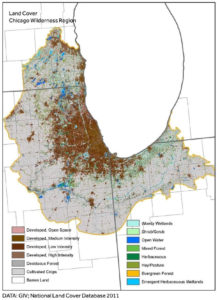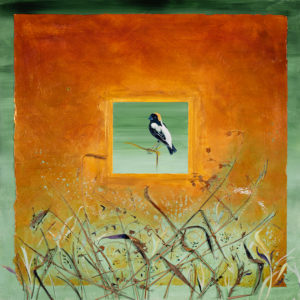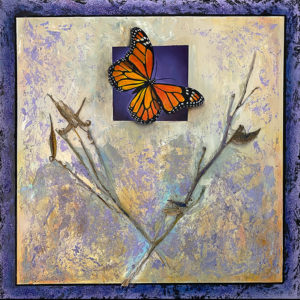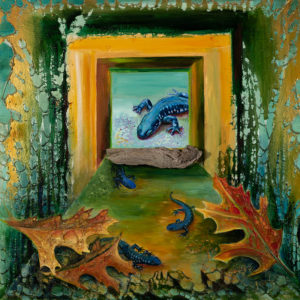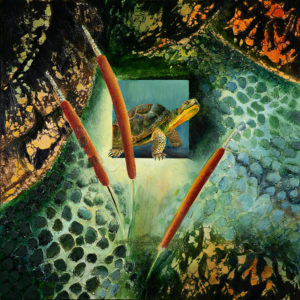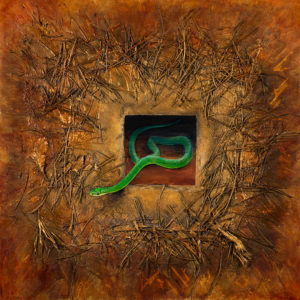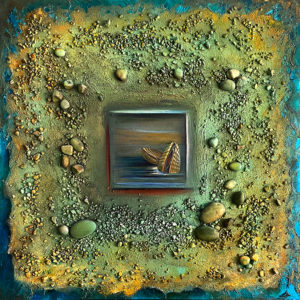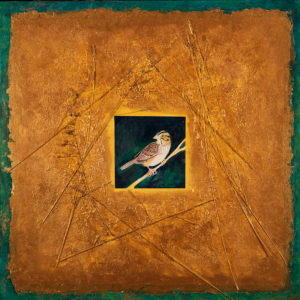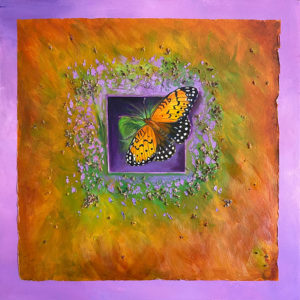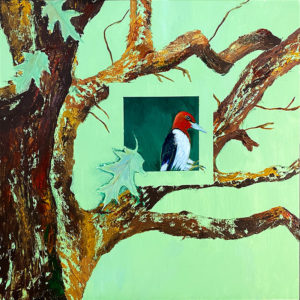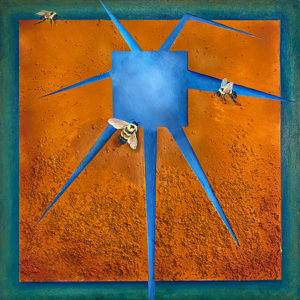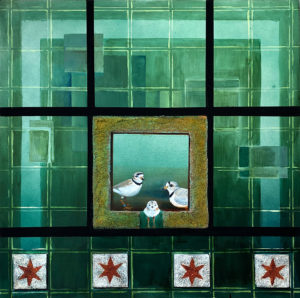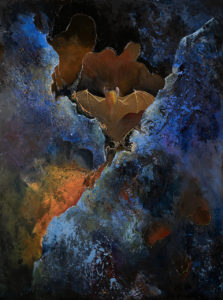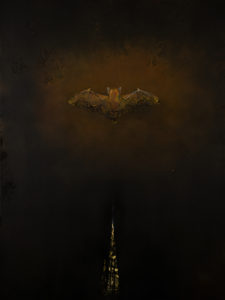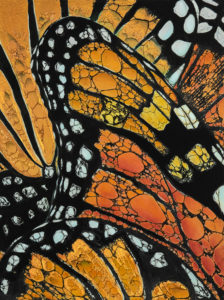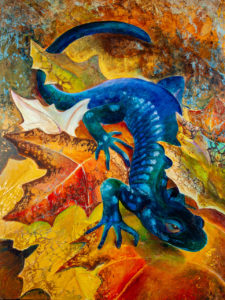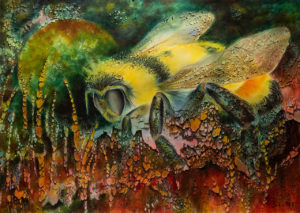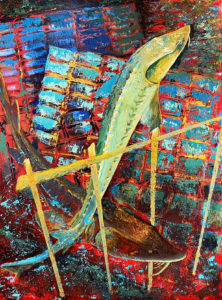Chicago Wilderness
Encompassing approximately 7.7 million acres of land around southern Lake Michigan and its waters, the Chicago Wilderness spans portions of 4 states (WI, Il, IN, MI). The Chicago Wilderness Organization, is a regional alliance whose mission includes “…leading strategy to preserve, improve, and expand nature and quality of life.” In 2017, forty member organizations were asked to select 12 species for monitoring and conservation. This list was intended to be “fluid” with expected changes as collective conservation efforts impacted each species.
Why these 12 animals?
click to elarge
These animals are among many struggling to survive in what remains of regional wetlands, grasslands, and woodlands, systems vital to controlling toxic pollutants, CO2, and floodwaters. The Rusty-Patched Bumble Bee is classified as Critically Endangered. The Little Brown Bat and Blanding’s Turtle are classified as Endangered. Each little animal is a link in a complex biodiversity chain being threatened by habitat loss and other environmental changes.
The descriptions below provide links to thirteen lead partners who work to protect and restore these species’ habitats and populations:
Grass to Guano
Environmental elements, specific to each subject, are incorporated into the canvases. Milkweed is embedded into the Monarch painting, duckweed is part of the Blanding’s Turtle painting, and sand and river rocks create deep textures for the Ellipse. Each of the twelve paintings has its own environmental discovery.
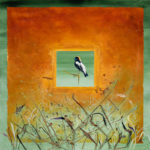
Bobolink
30″ x 30″ x 2 1/2″
Acrylic and Native Grasses on Wood
The male Bobolink displays black and white breeding plumage with an amber hood. A beautiful grassland bird, its yearly migration to and from South America covers up to 12,000 miles. Populations are down 50% due to habitat loss. Lead partner Illinois Audubon. |

Little Brown Bat (SOLD)
30″ x 30″ x 2 1/2″
Acrylic and Bat Guano on Wood
Nocturnal flying mammals, the much-maligned bat consumes insects that might otherwise invade our lives. Their population has dropped over 90%, primarily due to “white nose syndrome,” a fungal disease. Lead partner, Lincoln Park Zoo Check out the Monitoring Bat Diversity work at the Lincoln Park Zoo. |
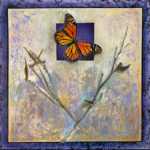
Monarch Butterfly
30″ x 30″ x 2 1/2″
Acrylic Paint and Milkweed on Wood
The Mazahua, First Nation Peoples of Mexico, believe that the migratory return of the iconic “Monarch Butterfly” each year brings with it the spirits of their deceased. Unfortunately, these magnificent pollinators have been in steep decline. US Fish and Wildlife issued a statement in 2015 that over a billion Monarchs have been lost since 1990. Scientists, citizen scientists, and local municipalities are all heeding this warning. Pollination gardens and milkweed plantings have become refuges during migration in hopes of sustaining this icon of beauty and change.
Chicago Field Museum, US Fish and Wildlife, and Chicago Academy of Sciences (Peggy Notebaert Museum) are partnering with other organizations to collect data and restore their numbers.
Check out this link from US Fish and Wildlife
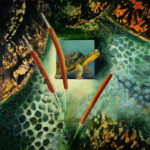
Blandings Turtle
30″ x 30″ x 2 1/2″
Acrylic Paint and Duckweed on Wood
A member of the wetlands, grasslands, and wooded areas, this semi-aquatic freshwater turtle reaches sexual maturity at 15, and can live to 70. Females can travel 2 miles to build a nest. Lead partners, Notebaert Museum, Il. Natural History Survey, and Illinois Dept of Natural Resources, and Lake County Forest Preserve work to protect and restore populations. Check out this link! |
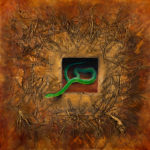
Smooth Greensnake
30″ x 30″ x 2 1/2″
Acrylic Paint and Grasses on Wood
The Smooth Greensnake is a friendly resident of grasslands and marshes. They often share communal nests, and can grow up to two feet long. This snake eats a variety of insects. Insecticides along with habitat loss are contributing to is population decline. Lead partner, Notebeart Museum. Check out this link!

Mottled Sculpin
30″ x 30″ x 2 1/2″
Acrylic Lake Michigan Sand on Wood
A voracious eater, this tiny camouflaged fish thrives in clean water, and assists in the reproductive process of the Ellipse mussel. They can be found in headwaters for rivers and streams along the river floor. Their population is threatened due to silt and pollution often caused by land development. Lead partner, Openlands.
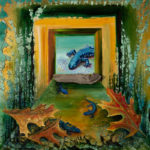
Blue-Spotted Salamander (SOLD)
30″ x 30″ x 2 1/2″
Acrylic and Found Wood on Wood
Vernal ponds in forested areas provide safe breeding grounds for this blue-spotted insect-eating salamander, who then moves onto shore to finding security under rotting logs. Lead partners, Illinois Natural History Survey, National Great Rivers and Education Center, and Notebaert Museum are among conservation groups.
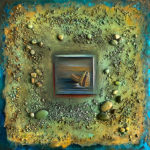
Ellipse
30″ x 30″ x 2 1/2″
Acrylic, River Rocks and Sand on Wood
Nature’s water filters, the surprisingly complex Ellipse, is a freshwater mussel important to maintaining clean streams. Its elaborate reproduction process might include the Mottled Sculpin (also on this list) as a host to spread its eggs. In spite of amazing longevity of up to 70 years or more, population drop of host fish, siltation, dams, and polluted water are all factors in the rapid decrease in their number. Lead partner, Openlands.
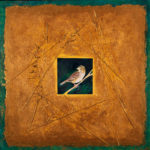
Henslow’s Sparrow
30″ x 30″ x 2 1/2″
Acrylic, Latex, and Grasses on Wood
This secretive little sparrow spends most of its time on the ground in tall grasslands. Originally a prairie dweller, loss of habitat finds them in hayfields and other grasslands. Lead partners, Great Lakes, and Illinois Audubon Society work to spearhead conservation efforts.

Regal Fritillary (SOLD)
30″ x 30″ x 2 1/2″
Acrylic, Latex, and Violets on Wood
The Regal Fritillary can be spotted in prairies where the its host plant, the Bird-Foot Violet grows. About 3-4 inches wide this beautiful butterfly’s life cycle is coordinated with native prairie flower growth for nectar, and violets to sustain their eggs. Their population has diminished greatly due to loss of habitat. Lead partner, Chicago Science Academy Peggy Notebaert Nature Museum. Check out this link!
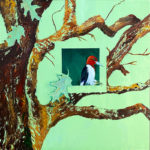
Red Headed Woodpecker
30″ x 30″ x 2 1/2″
Oak Leaf Impressions and Acrylic on Wood
Dressed in a striking black and white tuxedo, this woodpecker is omnivorous, but loves nuts. In the Chicago Wilderness they can be spotted in savanna areas populated by Oak trees, where they find acorns, or swoop through open fields to catch insects. They nest in existing tree cavities, or excavate their own, where they store food for lean times. Loss of habitat and suppression of natural woodland fires are factors causing regional population decline. National population loss is approximately 11.5% since 1966. Lead partner is The Nature Conservancy – Illinois Chapter.
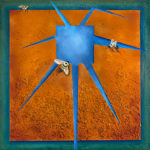
Rusty Patched Bumble Bee
30″ x 30″
Acrylic Paint and Bee Pollen on Wood
The Rusty-Patched Bumble Bee is the first bumble bee in the continental United States to be federally protected under the Endangered Species Act in 2017. Endemic to the Great Lakes region their population is estimated to have declined 91% since the mid 1990’s. They are significant pollinators of wildflowers essential to the survival of other wildlife. Lead partner, Chicago Academy of Sciences (Notebaert Museum). See their link!
Check out these two links from US Fish and Wildlife: Midwest region and Chicago area.
Thank you to the following people for their support and feedback:
- Liza Lehrer, Lincoln Park Zoo
- Lisa Faust, Lincoln Park Zoo
- Laura Reilly, Chicago Wilderness
- Laura Barghusen, Openlands
- Lalainya Goldsberry, Peggy Notebaert Nature Museum
- Allison Sacerdate-Velat, Peggy Notebaert Nature Museum
- Judy Pollock, Chicago Audubon Society
- Kristopher Lah, Endangered Species, US Fish and Wildlife Service
- Bob Dolgan, MontyandRose.net
- John Paulett
more local animals
Monty and Rose, Great Lakes Piping Plovers Not officially on the “priority species” list, Pam added the federally endangered Great Lakes Piping Plover, because of heroic efforts by the Chicago Park District, The Lincoln Park Zoo, and a small army of Chicago-area birders and citizen scientists protecting this pair of rock stars, Monty and Rose. The small shorebirds were spotted nesting on the sands of Montrose Beach in 2019, marking the return of the species to the Chicago beaches for the first time over 70 years. Monty and Rose have successfully nested the past three years at Montrose Beach and fledged 7 chicks. The species population once down to 12 pairs is now estimated at 75 pairs due to recovery efforts. Check out the excitement with Bob Dolgan’s films at MontyandRose.net |
